Animal Behavior, Nonverbal Communication, Rituals, and How Read A Dog's Disposition and Intentions
Animal Behavior
Conflict is an unavoidable part of animal life on this Earth. All animals use nonverbal communication in order to interact with the world around them, resolve social conflict and provide cues as to their disposition and intentions. Humans, I believe through the development of complex and expressive verbal communication, have largely become unaware or untrusting of nonverbal communication when interacting with other humans or animals.
If you make an effort to "get in touch with their animalistic side" and properly learn animal behavior it just may save you (or an animal) from injury or death by knowing the animals intentions and taking the correct course of action.
Everyone has heard of someone who had a surprise nasty encounter with another person only to later explain "I just knew that guy was up to no good". This is your subconscious mind interpreting nonverbal behavioral cues and feeding you information you should have listened to. I've found learning to identify and trust this information can help people to better interpret other people and whether they present a real threat or just a bluff.
Assessing Intentions
When confronted with an animal it is critical to correctly assess the animals intentions and disposition. An animal may present with fear and have defensive intentions, it be socially aggressive with others in its species or similar species, or it may be a predatory/prey interaction. Predatory/prey interactions are ruled by Fight or Flight and social interactions where rank is determined in the social order are ruled by Fight, Dominance, Submission, and Flight.
Neither fear nor aggression always appear the way a human might expect. If fear is the underlying disposition the animal likely wants to avoid contact or conflict if at all possible. The objective is to safely retreat or force the other party to retreat. This often involves bluffs, threatening displays, and persuasive contact.
Being able to assess an animals intentions can help you to avoid an altercation, know when there is only a hollow threat of violence vice a genuine danger, the level of threat/violence that may occur, and if altercation is a forgone conclusion.
Fight or Flight
When two differing species or otherwise non-social organisms encounter each other each must assess the risk or threat of the other and take the best course of action for their own survival. A lion must determine if she can take a baby wildebeest from the herd and the wildebeest must determine if they can defend against the attack. This is commonly known as the fight or flight response. After assessing the situation if you believe you can win or flight is not an option (e.g. you are cornered, you cannot afford to lose a resource or must protect offspring, etc) then a fight will ensue. Generally speaking one party is always willing to exercise flight if possible.
The behaviors are fairly simple. Try and appear as big as possible, bluff and display your capabilities with mock charges, teeth snapping, etc in the hopes the other animal takes flight.
Trying to look bigger and demonstrate defensive prowess is universal in the animal kingdom. Sharks arch their backs and drop their fins. Cobra's spread their hood. Frilled lizards show their neck frill, elephants flare their ears, dogs hackle their fur and flag their tail, bears stand on their hind legs and slap the ground, spiders raise their front legs, etc.
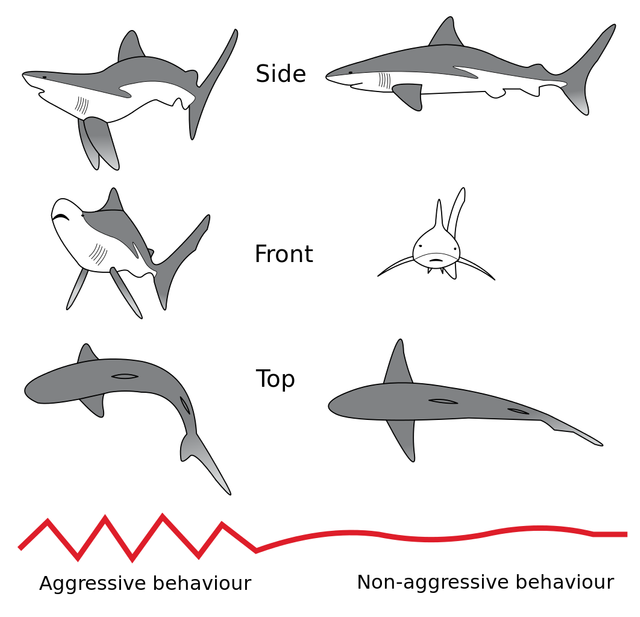
(graphic by https://en.wikipedia.org/wiki/User:Chris_huh)
Predatory / Prey Interactions
When an animal presents with predatory behavior, if the targeted prey takes flight it typically strongly reinforces the predatory response. This is why a dog chases a ball and a cat can't resist a laser. The hallmark of predatory behavior is focused staring and stalking. When the prey takes notice of the predator and takes flight there is an immediate chase response by the predator.
Humans, being the slow, clawless, thin-skinned, weak critters that we are, stand little to know chance of a successful flight from any predator that may view us as prey. The only viable response is thus to break the predator out of the predatory behavior. How is this done? Quite simply, don't look like prey.
If you run, you trigger an immediate predatory response. If you scream in fear you trigger an immediate predatory response. The most effective method is to act like a predator yourself. Turn and face the predator, stare, and stalk right back. When the predator naturally picks up on your predatory behavior cues, it will flip a switch in their brain that "oh... wait... he thinks I'm the prey... not good... abort!".
This is why when a person is "stalking" some dangerous animal with their high end camera and telephoto lens trying to get the perfect shot the animal often flees... the photographer unknowingly presents like a stalking predator.
The notable exception to this rule is encounters with animals with young. As the young must be defended at all costs, and likely cannot take flight like an adult of the species, mothers with vulnerable young will typically choose to fight. In this scenario, take flight as the mother's motivations to fight are strictly to remove the threat to her young. Encounters with mother grizzly bears and wild boar are common examples of this.
Fight, Dominance, Submission, and Flight
When an animal is confronted with another of the same species however, the fight or flight response is expanded with two additional options: dominance and submission. For same-species interactions the spectrum of responses become Fight <--- Dominance <---> Submission ---> Flight. The reason for this is that actual fights between two individuals of the same species are counterproductive to the survival of that species.
Elaborate posturing rituals following a generally uniform pattern with species-specific characteristics are thus evolved in order to determine the stronger individual. By going through these rituals excessive violence or potentially fatal damage to be done to one's opponent can be avoided. Nearly all animal species have their rituals to decide dominance and sometimes very similar species (typically if cross-species breeding is possible) will engage in these behaviors and associated rituals.
Even spiders engage in rituals
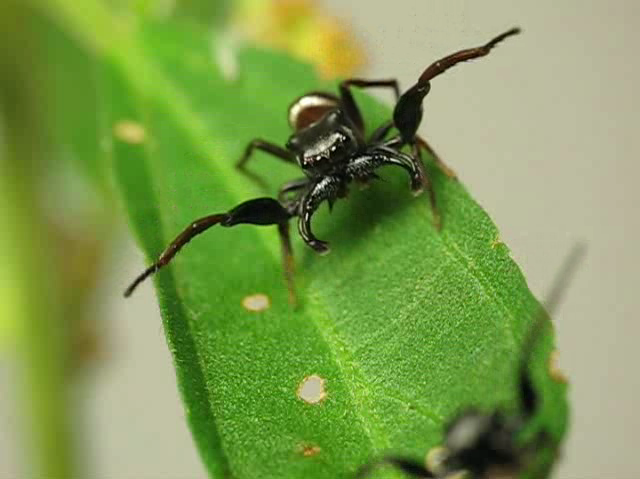
(photo by David E. Hill)
Interestingly and unique to the domestic dog, humans-dog interactions are governed by the fight, dominance, submission, flight behaviors despite being quite different species.
The Posturing Ritual
The general set of behaviors, in descending order of how they occur is something along the lines of the table below. It is much like a poker game. When one individual initiates a behavior to a second individual, the second individual has two options: submission or escalation. For example, if a dog locks eyes at another the second dog must avert eyes and show submission or escalate to the next level of behavior. If at any point in the ritual one party shows submission the ritual ends and the dominate individual is recognized. Note that the escalation is cumulative over the progression of the ritual.
| Dominant Behavior | Submissive Behavior |
|---|---|
| Direct sustained eye contact | Averting the eyes / breaking eye contact |
| Maximizing perceived physical size | Minimizing perceived physical size |
| Aggressive/Threatening vocalization | Submissive vocalization / Silence |
| Display of weaponry / visually threatening | Hiding of weaponry / visually unthreatening |
| Closing of physical distance | Increasing physical distance |
| Minor physical posturing | Retreat / not reciprocating posturing |
| Offensive physical combat | Defensive physical combat |
| Accepting submission of the defeated | Presentation of vulnerable part of the body to the victor |
Examples of the above behaviors can be found in nearly any animal species.
The Act of Submission
An interesting thing happens when a submissive individual submits to a dominant individual. A social contract is formed. The submissive one will expose their most vulnerable part of the body to the dominant one. The dominant one then in turn demonstrates and ability to, but restrains from doing further harm. This promise seals the social contract. They both accept their place in the social order. This is ubiquitous in the animal kingdom.
Dogs will roll over and expose their belly (no, its not just for a belly scratch, its submission) while the other dog hovers over them but does no further harm. The display and restraint of threat by the dominant dog serves to reinforce their respective roles in social contract.
Humans do this as well. Bowing before higher ranking individuals exposing the neck as a show of trust. A would-be knight kneels before his king who then dubs the new knight on the shoulders with a sword. The knight submits and exposes his neck while the king displays he chooses not to harm him. This is the social contract.
What it looks like in humans
Lets describe a scenario most people have either seen or personally had. Imagine you are at a bar having a drink with a friend. You notice someone across the bar staring at you. Thinking little of it, you converse with your friend and have another drink. You look back up and the person is still staring having unbroken their gaze. You now feel a distinct threatening behavior (sustained eye contact).
You have two options: be submissive or return in kind and up the ante. If you break eye contact and ignore it you are the submissive party. If you are more dominant you'll return the gaze and advance the ritual... you'll turn to face them directly and square off your body (maximizing perceived size).
The guy now has the same options. He squares off, puffs up his chest and says "you got a problem?" (vocalization).
You either must submit... "Not gonna waste my time"... or you're going to up the ante... "Yeah I got a problem" and walk towards the guy (closing distance).
He stands up and meets you half way and you're an inch from each others' faces, eyes locked, insults flying and a little minor shoving happens (minor physical posturing).
Having performed the ritual with neither submitting, the rank must be solved with physical combat. Rarely does social aggression result in serious harm or death... that would be bad for the species. Lower socially ranked individuals always have a role to play, and living to fight another day means the individual has time to develop, strengthen, and posture for rank another day.
The actual fights usually end with one individual ceasing offensive combat and accepting defeat. Any bouncer will tell you that in a bar fight there almost always one person who doesn't want to be in the fight and thats the one you grab and pull away.
Now, consider the above but with a dog.
You see a strange dog and you are staring at him. You assume he wants your attention and you turn to face them. "Hey buddy, whatcha doing? Want me to pet you?" you say as you walk slowly towards them. The dog stands up and approaches you slowly with a growl or hackled fur or a flagged but wagging tail. As you approach you reach out to let the dog smell your hand and hopefully give a pat on the head. Bam you take a bite on the hand and think "I didn't expect him to do that".
You should have. What you've just done is unknowingly perform the exact series of behaviors of the posturing ritual with the dog.
Social Cues in Dogs
Below is an illustration showing the range of dog posturing cues spanning aggression to fear as well as dominance to submission. In general most mammals follow the same spectrum and have visually remarkably similar cues.
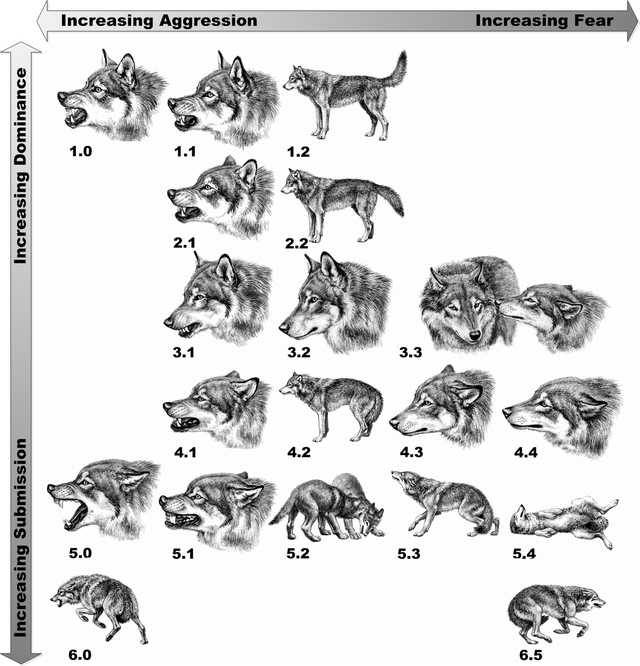
(illustration by Alice Rasmussen, modified by me)
In the above illustration you'll note there are columns from .0 to .4 which represent the spectrum of aggression and fear, respectively. There are also rows from 1 to 6 representing the spectrum of dominance and submission, respectively. The illustration at 3.2 shows a neutral expression. From 3. to 1. there is an increase in dominance and from 3. to 6. an increase in submission. From .2 to .0 there is an increase in aggression and from .2 to .4 an increase in fear. Displays .2 show dominance and submission without aggression or fear. Display 1.1. is the alpha wolf and 3.3. shows a greeting ceremony, a ritualized aggression and fear behavior showing slight traces of dominance and submission. Empty spaces, such as 2.0 and 3.0, have never been observed. (Abrantes, Roger. Dog Language - An Encyclopedia of Canine Behavior)
The 2 Types of Dog Bites on Humans
Knowing where on the above spectrums an animal displays can give you a good idea what to expect as far as real threat it presents. For example, in the context of dogs there are two types of bites humans generally receive. Overwhelmingly they are fear-motivated bites intended to communicate "see what I can do, now leave me alone". They are done with the front canines only, and it is a quick bite and release to demonstrate their ability. When a dog bites out of aggression (or prey, but address that later), it is a bite with the molars, not the canines, and is held firmly... the objective is for you not to be able to take flight.
| Aggression Motivated Bites | Fear Motivated Bites |
|---|---|
1)  | 2) 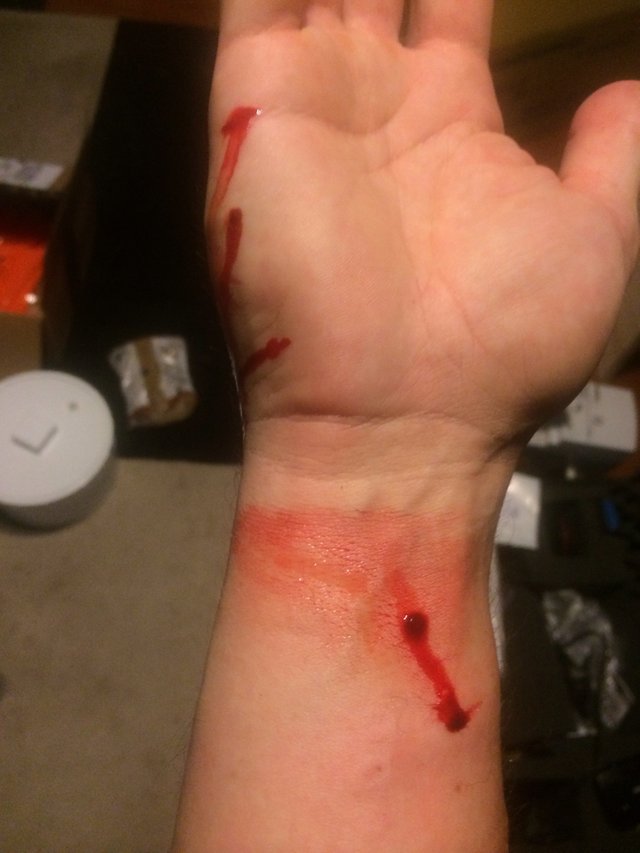 |
3) 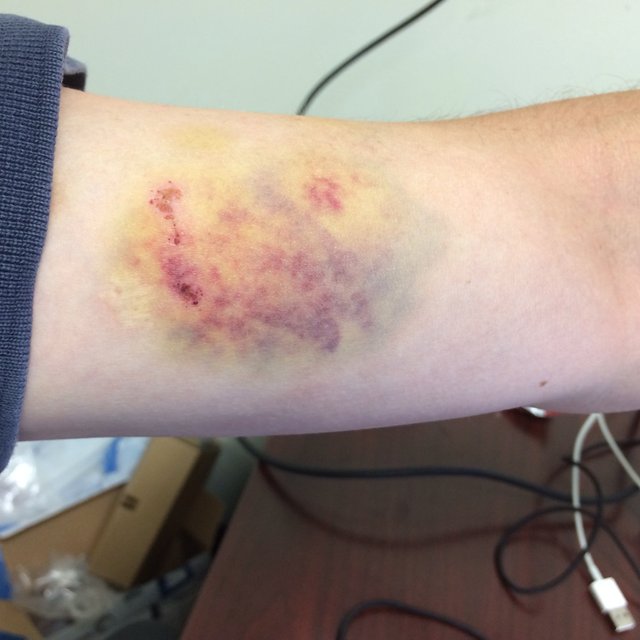 | 4) 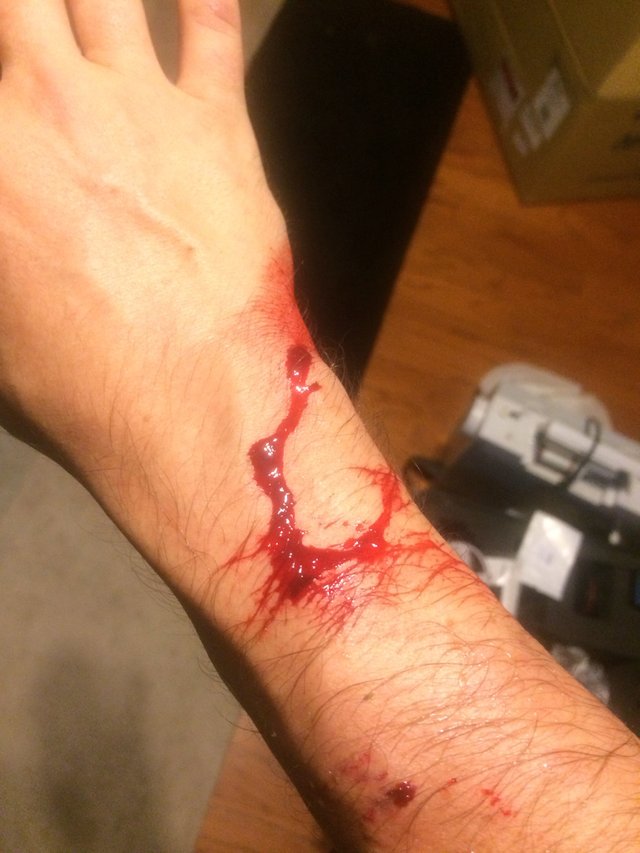 |
5) 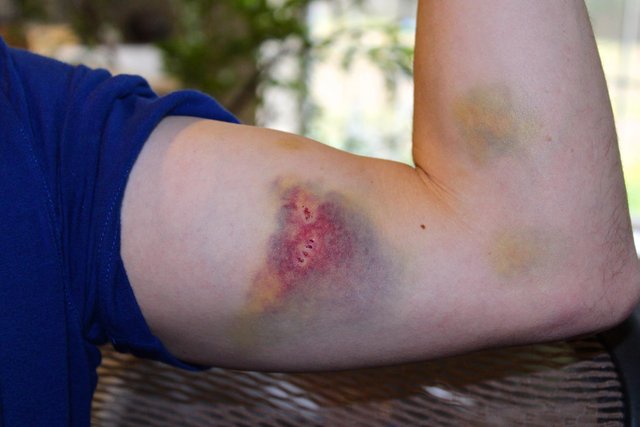 | 6) 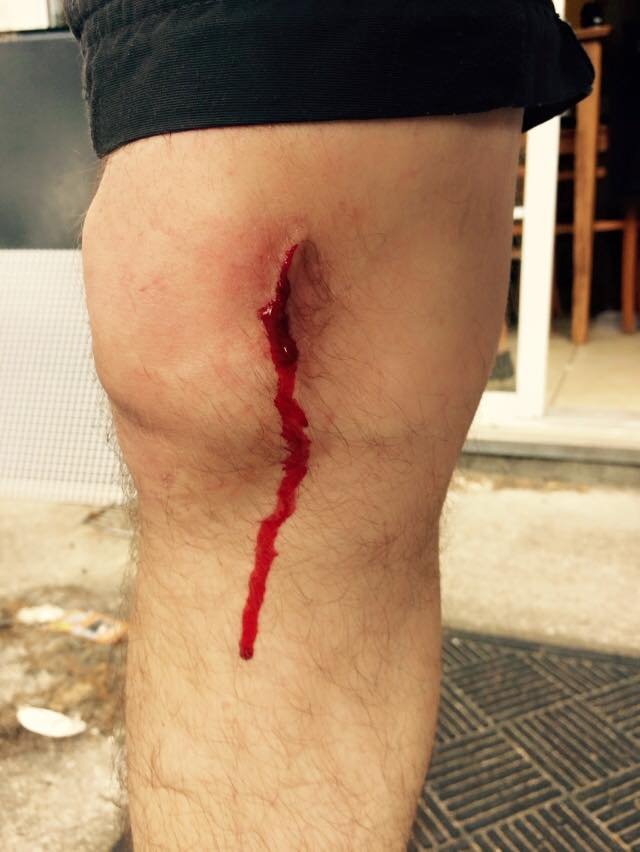 |
7)  | 8) 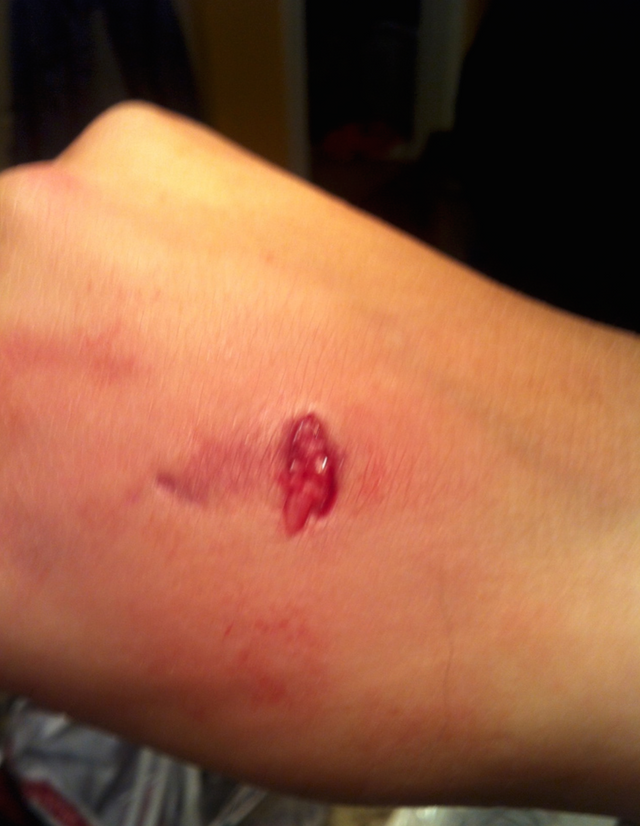 |
9) 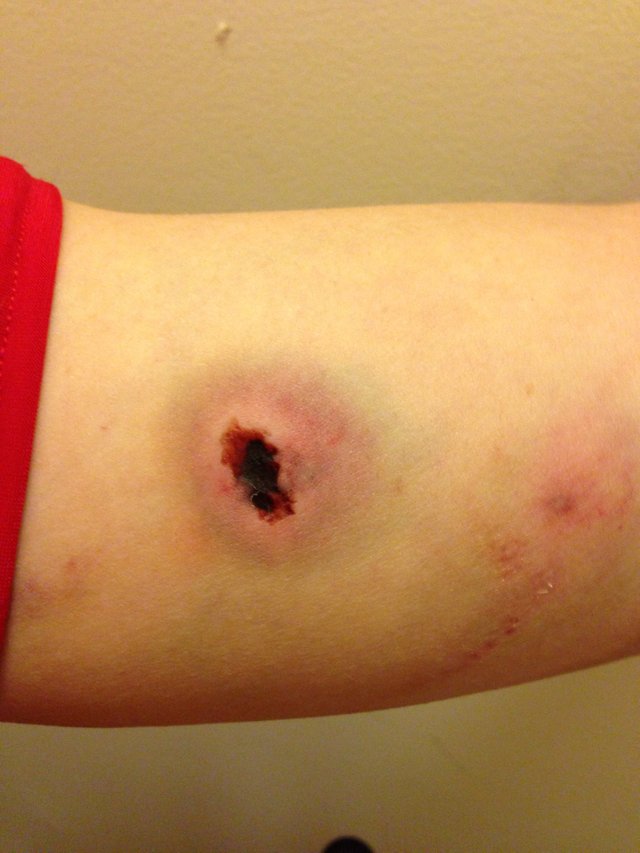 | 10) 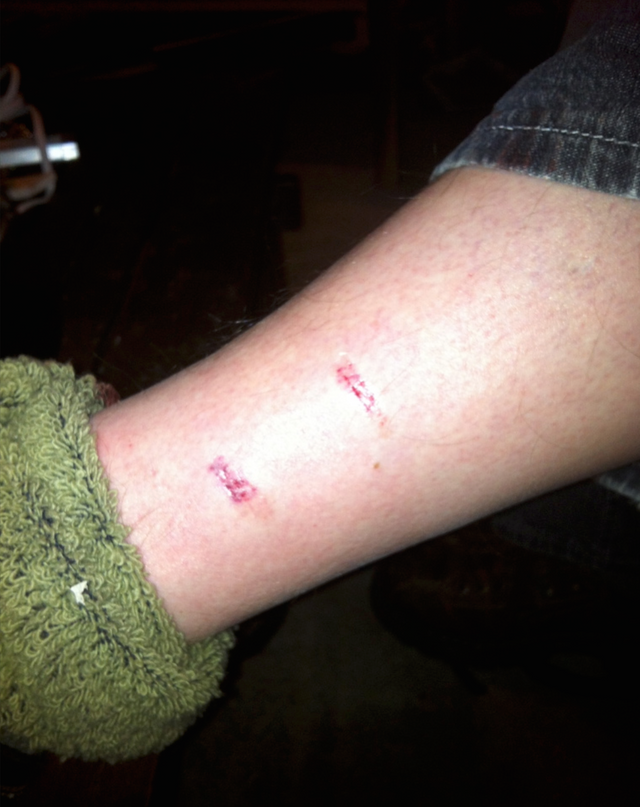 |
(all my own work)
You can see in the left column the very different nature of an aggressive bite using molars as compared with a fear-based canine bite. All but 7, 8 and 10 are me. All the images on the left are in the context of training protection dogs. All the images on the right side occurred outside of any training exercise.
And now for a test
Finally, here are a few final pictures that really capture nonverbal cues. In the first picture the dog on the left in each image is a visiting friends dog, while the dog on the right is my own. We had trained dogs together that day and he had taken some bites on the bicep he was displaying. Before he went home we took two pictures back to back. In the left image I was behind the camera (visualize someone crouching and looking through the viewfinder). In the right image we switched places and he was behind the camera. Notice the change in demeanor of the dog on the right when the "bad guy" he had been biting an hour earlier was suspiciously crouching and stalking behind the camera (compounded by his face being not visible to the dogs). Determine where on the above chart each dog is and comment if you like
The second photo was at a restaurant. Determine where on the above chart each dog is and comment if you like.

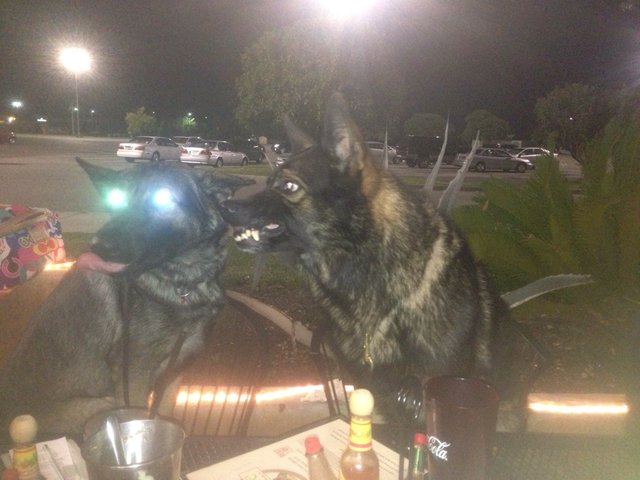
I hope you enjoyed this article! If you liked it give it an upvote. If you loved it follow me @hunterisgreat. If you hated it, provide me some constructive feedback! Thanks!
[Edited to fix duplicated picture]
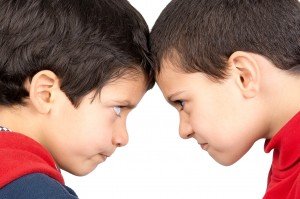
This is great stuff, followed and will promote this in the chat and on facebook.
Thanks, I appreciate it! The little bit about seeing someone in a bar I've used to describe dog behavior and how to approach and communicate with a dog to many people. My older male dog very methodically goes through the posturing ritual with people, and have shown people both how to illicit an aggressive posture from him, and then immediately show them how they can walk up with the right nonverbal cues (no staring in the eyes, giving a side profile or even a back, etc) can allow them to easily come right up, crouch down and petting him with no posturing from him and a neutral disposition. I need to get that on video sometime
Wow. This is really great information. Thank you for taking the time to write such a thorough post on this subject!
Thank you for taking the time to read it! Dog behavior is one of those things I know a lot about :-)
Here is me and my older female dog
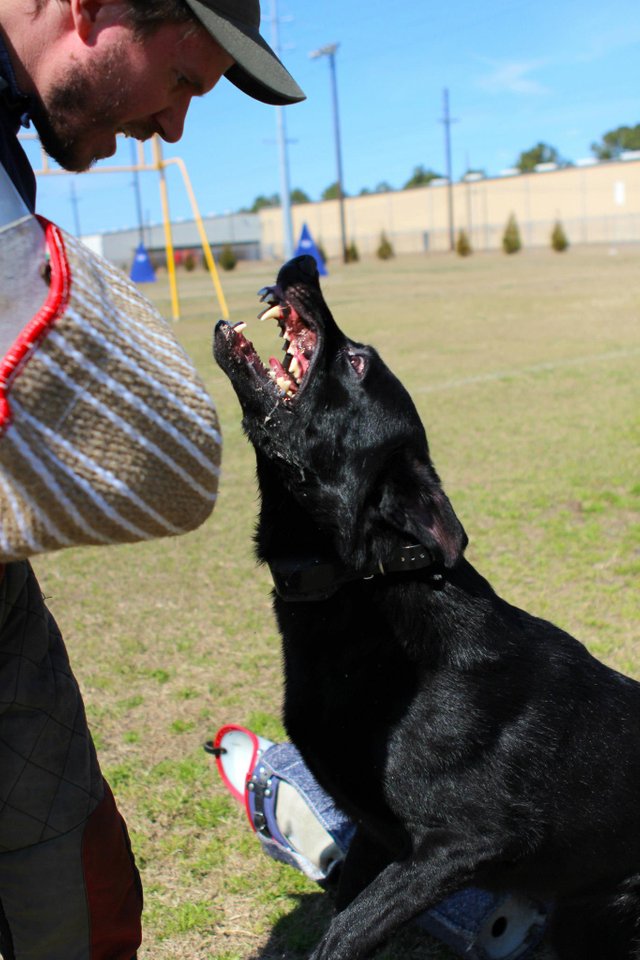
Like this post ...thumbs up for this
Do check my work if u dont mind sir
Great work with this one,
I think nearly every dog bite is preventable and just human stupidity is the main cause of these situations. We have to try to understand where a dog comes from, just like you explain in this article, and mix that with how they react.
Resteeming and upvoting !
(edit.. its from last year I see now, so resteeming is no-go anymore?)